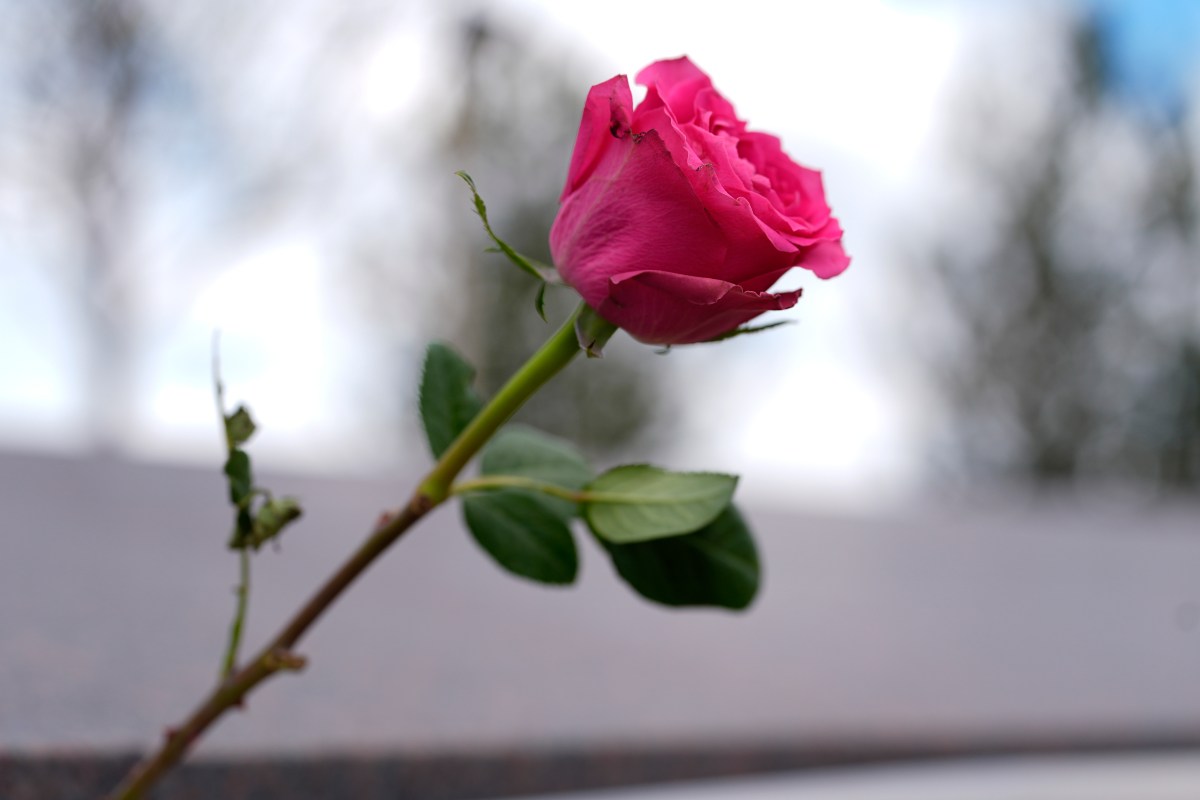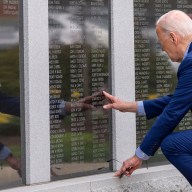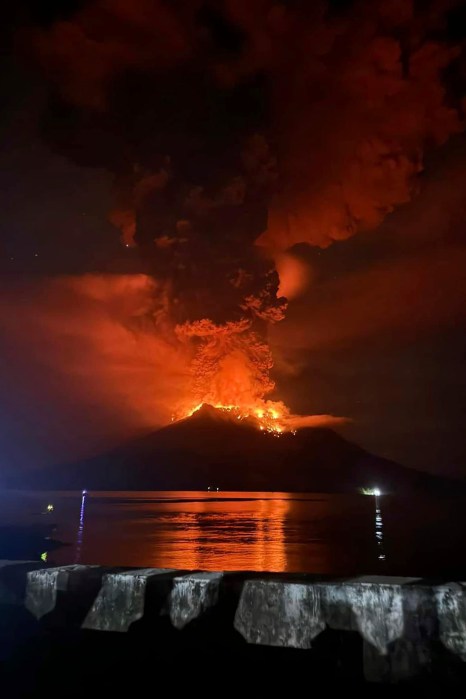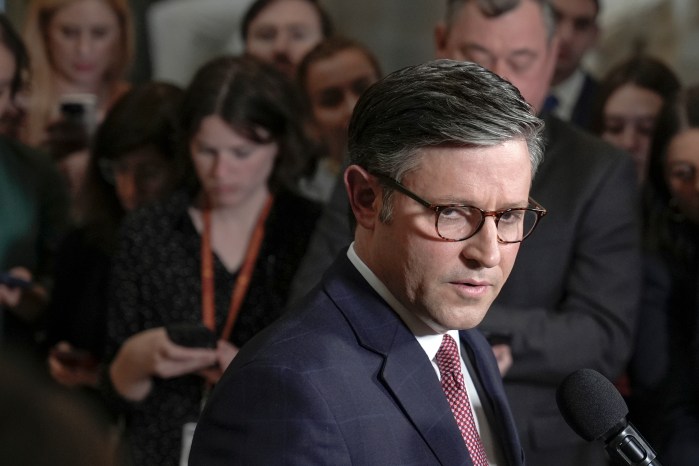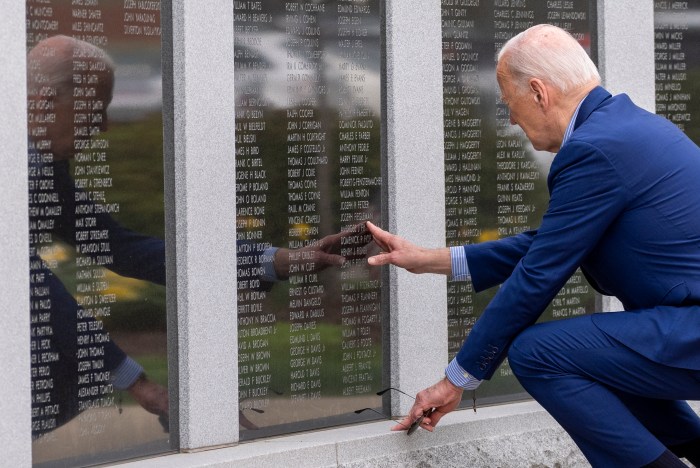DENVER (AP) — Hours after she escaped the Columbine High School shooting, 14-year-old Missy Mendo slept between her parents in bed, still wearing the shoes she had on when she fled her math class. She wanted to be ready to run.
Twenty-five years later, and with Mendo now a mother herself, the trauma from that horrific day remains close on her heels.
It caught up to her when 60 people were shot dead in 2017 at a country music festival in Las Vegas, a city she had visited a lot while working in the casino industry. Then again in 2022, when 19 students and two teachers were shot and killed in Uvalde, Texas.
Mendo had been filling out her daughter’s pre-kindergarten application when news of the elementary school shooting broke. She read a few lines of a news story about Uvalde, then put her head down and cried.
“It felt like nothing changed,” she recalls thinking.
In the quarter-century since two gunmen at Columbine shot and killed 12 fellow students and a teacher in suburban Denver — an attack that played out on live television and ushered in the modern era of school shootings — the traumas of that day have continued to shadow Mendo and others who were there.
Some needed years to view themselves as Columbine survivors since they were not physically wounded. Yet things like fireworks could still trigger disturbing memories. The aftershocks — often unacknowledged in the years before mental health struggles were more widely recognized — led to some survivors suffering insomnia, dropping out of school, or disengaging from their spouses or families.
Survivors and other members of the community plan to attend a candlelight vigil on the steps of the state’s capitol Friday night, the eve of the shooting’s anniversary.
April is particularly hard for Mendo, 39, whose “brain turns to mashed potatoes” each year. She shows up at dentist appointments early, misplaces her keys, forgets to close the refrigerator door.
She leans on therapy and the understanding of an expanding group of shooting survivors she has met through The Rebels Project, a support group founded by other Columbine survivors following a 2012 shooting when a gunman killed 12 people at a movie theater in the nearby suburb of Aurora. Mendo started seeing a therapist after her child’s first birthday, at the urging of fellow survivor moms.
After she broke down over Uvalde, Mendo, a single parent, said she talked to her mom, took a walk to get some fresh air, then finished her daughter’s pre-kindergarten application.
“Was I afraid of her going into the public school system? Absolutely,” Mendo said of her daughter. “I wanted her to have as normal of a life as possible.”
Researchers who’ve studied the long-term effects of gun violence in schools have quantified protracted struggles among survivors, including long-term academic effects like absenteeism and reduced college enrollment, and lower earnings later in life.
“Just counting lives lost is kind of an incorrect way to capture the full cost of these tragedies,” said Maya Rossin-Slater, an associate professor in the Stanford University School of Medicine’s Department of Health Policy.
Mass killings have recurred with numbing frequency in the years since Columbine, with almost 600 attacks in which four or more people have died, not including the perpetrator, since 2006, according to data compiled by The Associated Press.
More than 80% of the 3,045 victims in those attacks were killed by a firearm.
Nationwide hundreds of thousands of people have been exposed to school shootings that are often not mass-casualty events but still traumatic, Rossin-Slater said. The impacts can last a lifetime, she added, resulting in “kind of a persistent, reduced potential” for survivors.
Those who were present at Columbine say the years since have given them time to learn more about what happened to them and how to cope with it.
Heather Martin, now 42, was a Columbine senior in 1999. In college, she began crying during a fire drill, realizing later that a fire alarm had gone off for three hours when she and 60 other students hid in a barricaded office during the high school shooting. She couldn’t return to that class and was marked absent each time, and says she failed it after refusing to write a final paper on school violence, despite telling her professor of her experience at Columbine.
It took 10 years for her to see herself as a survivor, after she was invited back with the rest of the class of 1999 for an anniversary event. She saw fellow classmates having similar struggles and almost immediately decided to go back to college to become a teacher.
Martin, a co-founder of The Rebels Project, named after Columbine’s mascot, said 25 years has given her time to struggle and figure out how to work out of those struggles.
“I just know myself so well now and know how I respond to things and what might activate me and how I can bounce back and be OK. And most importantly I think I can recognize when I am not OK and when I do need to seek help,” she said.
Kiki Leyba, a first-year teacher at Columbine in 1999, was diagnosed with post-traumatic stress disorder soon after the shooting. He felt a strong sense of commitment to return to the school, where he threw himself into his work. But he continued to have panic attacks.
To help him cope, he had sleeping pills and some Xanax for anxiety, Leyba said. One therapist recommended chamomile tea.
Things got harder for him after the 2002 graduation of Mendo’s class, the last cohort of students who lived through the shooting since they had been through so much together.
By 2005, after years of not taking care of himself and suffering from lack of sleep, Leyba said he would often check out from family life, sleeping in on the weekends and turning into a “blob on the couch.” Finally, his wife Kallie enrolled him in a one-week trauma treatment program, arranging for him to take the time off from work without telling him.
“Thankfully that really gave me a kind of a foothold … to do the work to climb out of that,” said Leyba, who said breathing exercises, journaling, meditation and anti-depressants have helped him.
Like Mendo and Martin, he has traveled around the country to work with survivors of shootings.
“That worst day has transformed into something I can offer to others,” said Leyba, who is in Washington, D.C. this week meeting with officials about gun violence and promoting a new film about his trauma journey.
Mendo still lives in the area, and her 5-year-old daughter attends school near Columbine. When her daughter’s school locked down last year as police swarmed the neighborhood during a hostage situation, Mendo recalled worrying things like: What if my child is in danger? What if there is another school shooting like Columbine?
When Mendo picked up her daughter, she seemed a little scared, and she hugged her mom a little tighter. Mendo breathed deeply to stay calm, a technique she had learned in therapy, and put on a brave face.
“If I was putting down some fear, she would pick it up,” she said. “I didn’t want that for her.”
Associated Press writer Mead Gruver contributed to this report.

